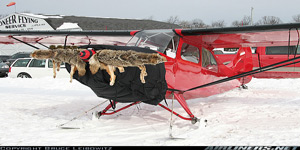

Simviation Forums
Flight Simulator and other chat

at a guess I would say they are used to channel the airflow underneath the plane, adding aerodynamic stability




How you like me now?

Slap on a delta wing and that'd look just like a Typhoon.


On Dec 26, 1978, General Dynamics was awarded a contract to convert the sixth FSD F-16A (# 75-0750) into an AFTI aircraft. It capitalized on the experience gained with the F-16 CCV (Control Configured Vehicle) (#72-1567). The aircraft was handed over to the company in March 1980.
From the previous image by DCDunning of the F-16 AFTI in flight, you can clearly see the CCV canards below the air inlet.
The AFTI F-16 was fitted with twin canard surfaces mounted below the air intake. Those canards had been taken from the CCV/F-16 CCV. The digital flight control system gave the pilot a new freedom in maneuvering, making it possible to assume unorthodox flight attitudes, using nose pointing, direct force translation, and other unconventional means of maneuvering.
F-16 serial number 75-0750 has completed a distinguished career as an advanced technology test aircraft for more than twenty-two years. It is best known for its service as the Advanced Fighter Technology Integration (AFTI)/F-16 technology demonstrator since the early 1980s. Aircraft 750 flew its final flight on 9 January 2001 from its birthplace in Fort Worth to Wright-Patterson AFB in Dayton, Ohio. It is scheduled to be retired and inducted into the Air Force Museum there.


Like this?
But anyway, I was wondering if anyone noticed those fins protruding down from the air intake.

Very old technology........

 People Eating Tasty Animals.
People Eating Tasty Animals.

But anyway, I was wondering if anyone noticed those fins protruding down from the air intake.


Return to Specific Aircraft Types
Users browsing this forum: No registered users and 307 guests